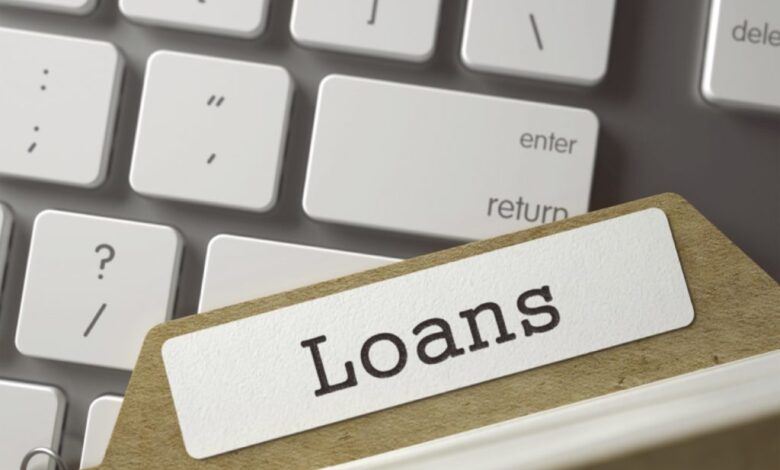The Startup Magazine How to Apply For Low Interest Consumer Loans (Søke Forbrukslån Lav Rente)

Low interest rates can be an invaluable detail when you are looking over consumer loan options, whether you need something massive to cover a huge expense or just need a small-scale financial safety net. The lower your interest, the lower your overall costs will be when you pay the loan off – at least in theory.
However, low interest rates are desirable, and lenders know this. These loans are often much harder to get simply because of the reduced interest, and they can have additional terms or fees to offset the lender’s risk. So, what can you do to get the best low-interest consumer loans possible?
Understanding Low-Interest Consumer Loans
Before proceeding with the application process, it is important to understand what constitutes a low-interest loan and why it is so useful.
A low-interest consumer loan is one where the annual percentage rate (APR) is significantly lower than average. This means that the cost of borrowing is reduced, leading to lower monthly payments and a smaller total repayment amount – in simple terms, you are paying less on average than with other loans.
Interest rates on consumer loans can vary widely based on several factors, including your credit score, the loan amount, the repayment term, and the lender’s policies. Even a small difference in interest rates can have a significant impact on how much you end up paying over the life of the loan, which is why finding the lowest possible rate is so important.
Why Is This Important?
Aside from the reduced cost, interest also influences the risk that a company is taking when they loan you the money. Companies want to make money off loans, and low interest means that they are earning less – so in many cases, they will respond to riskier customers with higher-interest loans.
A lower interest rate typically indicates a lower-risk loan, which is often associated with borrowers who have excellent credit profiles and stable financial situations. On the other hand, higher interest rates are often assigned to riskier loans to offset potential losses.
This makes obtaining a low-interest loan harder overall, especially if your credit score has taken a few hits in recent years. Thankfully, there are a few ways to make yourself more appealing to lenders who want safer and more reliable customers.
How To Increase Your Chances of Low-Interest Loans
Use Secured Loans
Secured loans are backed with collateral, like a car or house, that the lender can take if you do not pay them back. While this obviously means that you risk losing something, it can also help you secure better loan terms since the lender will still be able to turn a profit even if you literally run out of money.
Secured loans are almost always going to be significantly better than unsecured loans of the same value, but the exact difference varies from loan to loan. Be sure to talk with your lender before jumping right into an unsecured loan offer.
Improve Your Credit Score
Your credit score is one of the primary factors lenders use to determine your interest rate. The better your credit score, the less of a risk you are, and the lower your interest rate will likely be.
If you have a low credit score, improving it can take time and effort, but it is still worth it. You can start by paying off any existing debts, tracking your spending, and using credit cards responsibly.
Reduce Your Debt-to-Income Ratio
Lenders assess your debt-to-income (DTI) ratio to gauge your ability to manage monthly payments. A lower DTI ratio highlights that you have more disposable income to cover new loan payments, which makes you much less of a risk to them.
To improve your DTI ratio, you have to either increase your income or pay down existing debts to reduce the amount you owe relative to your income. Again, this can take time and is not ideal for an urgent loan situation, but it is a good thing to do in the long term regardless.
Consider a Co-Signer
If your credit is less than stellar, having a co-signer with a strong credit history can improve your chances of securing a low-interest loan. A co-signer agrees to take responsibility for the loan if you default, reducing the lender’s risk and potentially qualifying you for a better rate.
This naturally needs you to find a co-signer, but talking with a friend or family member can sometimes be all you need. Having an extra level of risk prevention means that it is much easier to get better loans.
Negotiate with Lenders (And Explore More Options)
Do not hesitate to negotiate with lenders for better terms. Sometimes, lenders are willing to offer more favorable rates or terms if you have a strong credit profile or are a long-time customer.
Look for lenders that offer competitive rates, no hidden fees, and easy repayment terms – do not be afraid to explore new loan options. This can sometimes even lead to lenders easing up on their repayment terms to convince you to work with them instead of a competitor.
Remember that not all companies are created equal, especially across different countries. For example, if you are looking for a forbrukslån med lavest rente, do not be afraid to look at a wide range of Norwegian loan options.
How to Apply for A Low-Interest Consumer Loan
Applying for a low-interest consumer loan involves several steps to ensure you get the best possible terms. Not only do you have to find a good loan, but you need to know how to apply for it properly and how to avoid making any major mistakes if you have not had to arrange a loan before.
Assess Your Financial Situation
Before applying for a loan, review your financial situation carefully. This includes understanding your credit score, current debts, income, and overall financial health.
This is not just for your own benefit, although it absolutely helps you understand what kind of loan you might need. Knowing your financial health can also make the application process easier since you can give those details directly to each lender instead of having to constantly double-check financial documents.
Gather Required Documentation
Just like your financial health details, important documents should be at the ready. These can be anything from proof of income and identity to breakdowns of your current debts.
Having all of the right documentation ready can streamline the application process significantly, making it easier to find a loan that fits your needs. More importantly, it can make it easier to qualify for a low-interest loan overall.
Research and Compare Lenders
Research various lenders to find those offering low interest rates. Compare their loan terms, fees, and conditions to determine which lender best meets your needs.
Remember that not all loans are created equal. Some companies charge higher fees or have more restrictive repayment terms, while others have lower fees or more flexible payment options. Looking for a balance that works for your budget and lifestyle is important.
Talk With The Lenders
Getting in contact with different lenders can be a good way to get an idea of what is available. Talk with representatives about their loan terms, and ask them any questions you may have about the application process.
Lenders can provide you with a loan estimate, which is a summary of the loan terms, fees, and interest rates. This is a great way to get a clear picture of how a particular loan would work for you and gives you some extra information to use when comparing different options.
Fill Out The Application
Once you have decided on a lender, you just need to apply. This process is usually quite straightforward, but it may require some additional documentation, such as proof of identity or proof of income.
Some lenders may also have special requirements or qualifications, like a minimum credit score or a certain employment status. Take the time to research any additional requirements that might apply to your situation, and do not be afraid to ask questions if you are not entirely sure about something.
Get Pre-Qualified or Approved
After you have submitted your application, the lender will analyze your documents and decide if you qualify for the loan. Pre-qualifying can give you an idea of the interest rates and terms you might qualify for, helping you make more informed decisions before submitting a full application.
This avoids your credit score taking a hit just because you are looking into a loan offer, which can be great if you are still not entirely sure whether you are going with this particular lender.
After that, it is simply a matter of getting accepted for the loan and then paying it off like normal. Be careful, be smart, and use some common sense when handling loans of any size, especially consumer loans that you are using for an emergency cash boost.
Remember: there is no such thing as a guaranteed way to get a perfect loan. Look over your options carefully and consider the kind of loan you actually need.






